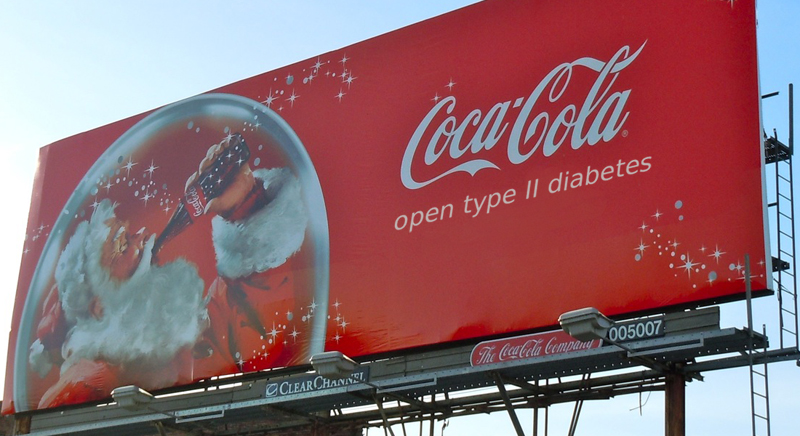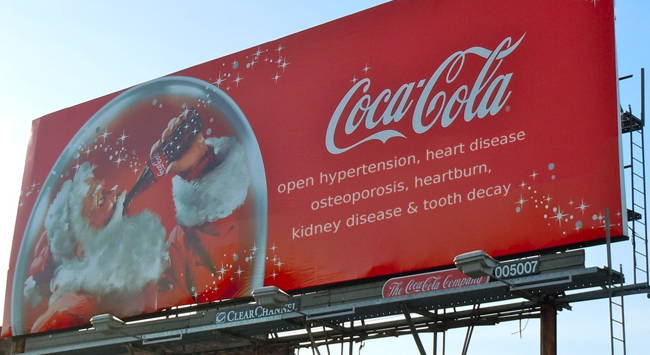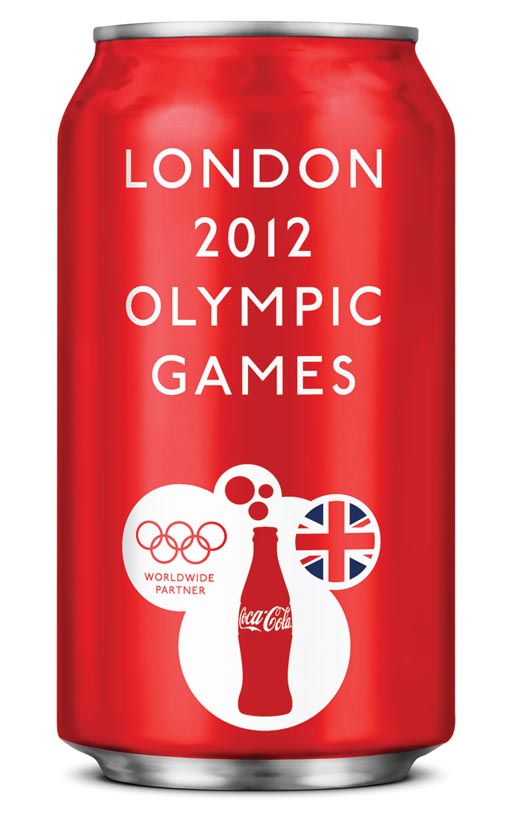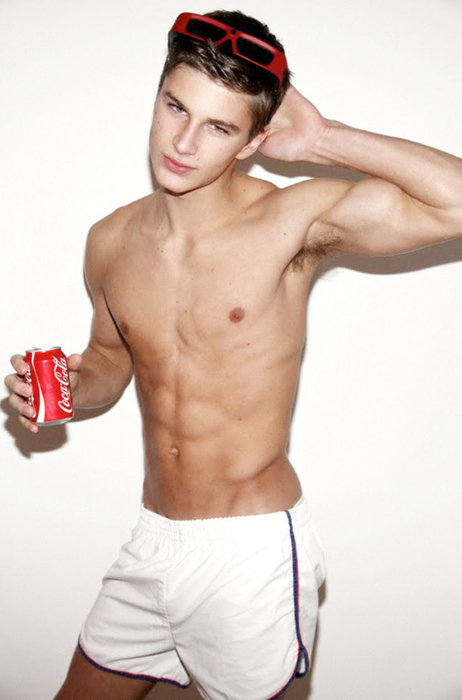My Rhode Island home is in the tough part of town. Unemployment is high. Food assistance programs are prevalent. And opportunities are far and few between.
But in contrast to the grey skies and muted color palette of the vacant mill buildings and abandoned factories, a bright new billboard has been erected atop a decaying brick warehouse. Much like the billboard below, it shows Santa drinking a Coca Cola beverage - and it offers a message of hope. “Open happiness,” it says.
Is it a coincidence that this billboard is in a poor community? Probably not. According to studies, low-income adults get 9% of the daily calories from soda. For high income adults, that number is just 4%. And soda is cheap. In fact, it’s often cheaper than water. It’s why Coca Cola is one of the biggest recipients of SNAP dollars through the federal food assistance program. Moreover, because low income communities have less access to resources and education, this population is likely to be less informed about the health risks of soda consumption.
While the billboard offers a message of hope by linking Coca Cola with happiness, the reality is quite different. Soda consumption has been linked with a number of ailments and conditions including obesity, liver damage, tooth decay, kidney disease, diabetes, heartburn, osteoporosis, hypertension, heart disease and impaired digestion. Doesn’t sound like happiness to me.
As such, I’ve taken the liberty to redesign the Coca Cola billboard in Photoshop to correct for inaccuracies. I hope you enjoy. And happy holidays, Coke.
















